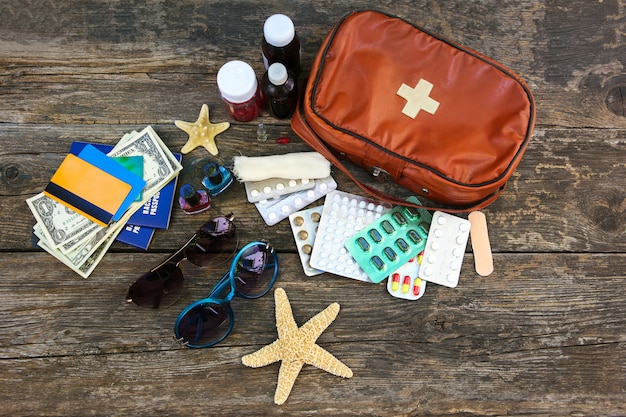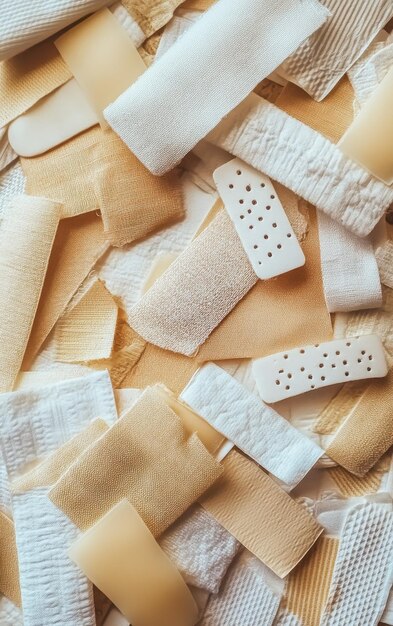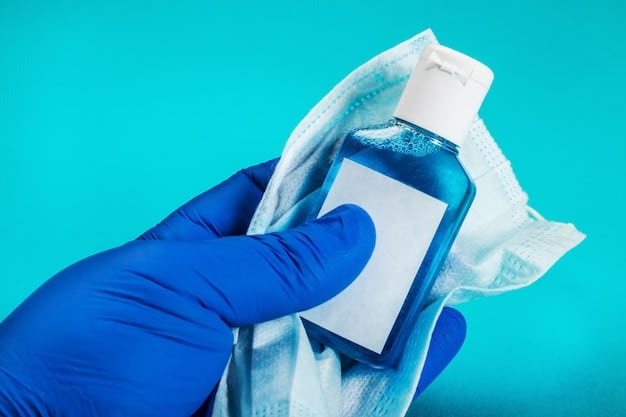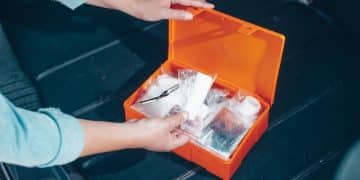Travel First Aid: Essential Items for Your Safety Kit in 2025

Preparing a travel first aid kit with essential items is crucial for ensuring your safety and well-being in 2025, addressing common travel-related health issues and potential emergencies while away from home.
Planning a trip in 2025? Don’t forget the most important travel companion: your **travel first aid** kit. Packing the right supplies can make all the difference in handling minor ailments or unexpected injuries, ensuring a safer and more enjoyable journey.
Building Your Perfect Travel First Aid Kit
Creating a comprehensive travel first aid kit involves careful consideration of the types of trips you take and the potential health concerns you might encounter. A well-prepared kit can provide peace of mind and enable you to address minor medical issues promptly, preventing them from escalating into more serious problems.
Assessing Your Travel Needs
Before you start packing, think about your destination, the activities you plan to engage in, and your personal health history. This information will help you determine the specific items you need to include in your kit.
- Consider the climate and environment of your destination.
- Factor in any pre-existing medical conditions or allergies.
- Think about the types of activities you’ll be participating in.
Different destinations and activities require different levels of preparation and supplies. For instance, a trip to a remote area with limited access to medical care requires a more extensive kit than a weekend getaway to a city.

Essential Medications for Your Travel Kit
A well-stocked travel first aid kit should include a variety of over-the-counter and prescription medications to address common travel ailments and manage pre-existing conditions. It’s essential to consult with your doctor or pharmacist before including any new medications in your kit.
Over-the-Counter Medications
Over-the-counter medications can help you manage minor pain, fever, allergies, and digestive issues. These are often readily available but having them on hand can save time and hassle.
- Pain relievers such as acetaminophen or ibuprofen
- Antihistamines for allergies or insect bites
- Anti-diarrheal medication for digestive upsets
- Motion sickness medication for travel by car, plane, or boat
Remember to check expiration dates and replace medications as needed. Store medications in their original packaging to ensure proper identification and dosage.
Wound Care: Bandages, Antiseptics, and More
Cuts, scrapes, and blisters are common travel injuries. Having the right wound care supplies can help you clean, protect, and heal these injuries effectively, preventing infection and promoting faster recovery.

Start with antiseptic wipes to clean the wound and kill bacteria. Then, apply a sterile bandage to protect the wound from further contamination.
Must-Have Wound Care Items
- Adhesive bandages in various sizes and shapes
- Sterile gauze pads and tape
- Antiseptic wipes or solution
- Blister treatment pads
For more serious wounds, seek professional medical attention. A well-stocked wound care kit is intended for minor injuries only.
Tools and Instruments: What to Include
Certain tools and instruments can be invaluable in a travel first aid kit, enabling you to administer care safely and effectively. These items can help with tasks such as removing splinters, applying bandages, and taking temperatures.
Essential Tools and Instruments
A small pair of scissors can be useful for cutting bandages or clothing. Tweezers can help you remove splinters or insect stingers. A thermometer allows you to monitor your temperature and detect fever.
- Small scissors
- Tweezers
- Thermometer
Consider including safety pins, which can be used for a variety of purposes, such as securing bandages or repairing clothing. Store these tools in a protective case to prevent damage and ensure they are readily accessible when needed.
Having these tools on hand can make a significant difference in your ability to handle unexpected health issues during your travels. Remember to familiarize yourself with how to use each item before your trip.
Specialized Items to Consider
Depending on your destination and activities, you may need to include specialized items in your travel first aid kit. These items can address specific health risks or environmental factors unique to your trip.
Items Based on Your Destination
If you’re traveling to a region with a high risk of mosquito-borne illnesses, include insect repellent and mosquito netting. If you’re going to a sunny destination, pack sunscreen with a high SPF and lip balm with sun protection.
If you’re traveling to a high-altitude location, consider including medication to prevent altitude sickness. If you have allergies, remember injectable epinephrine.
Maintaining and Replenishing Your Kit
A travel first aid kit is only effective if it’s properly maintained and replenished. Regularly check the kit to ensure that all items are in good condition and have not expired. Replace any used or expired items promptly.
Regularly Checked Items
Check expiration dates on medications, replace used bandages, and recharge any medical devices with batteries. Store your kit in a cool, dry place to prevent damage from heat or moisture.
- Monitor expiration dates of medications
- Replace used or damaged supplies
- Keep the kit in a cool, dry place
By taking these steps, you can ensure that your kit is always ready to use when you need it.
| Key Point | Brief Description |
|---|---|
| 💊 Essential Meds | Include pain relievers, antihistamines, and any personal prescriptions. |
| 🩹 Wound Care | Pack bandages, antiseptic wipes, and blister treatment options. |
| 🌡️ Tools & Instruments | Scissors, tweezers, and a thermometer for minor medical needs. |
| ☀️ Sun Protection | Sunscreen and lip balm to protect against sun exposure. |
FAQ: Travel First Aid
▼
A basic kit includes bandages, antiseptic wipes, pain relievers, antihistamines, and any personal medications. These items cover common minor injuries and ailments while traveling.
▼
Research your destination and pack items accordingly. For tropical areas, include insect repellent. For sunny locations, add sunscreen. For remote areas, bring extra supplies.
▼
Yes, but keep medications in their original containers with the prescription label. Carry a copy of your prescription and a letter from your doctor if needed, especially for controlled substances.
▼
Check your kit before each trip to ensure that all items are in good condition and not expired. Replenish any used or expired items promptly to keep your kit ready for use.
▼
Store your kit in a cool, dry place away from direct sunlight and extreme temperatures to maintain the integrity of the contents. Keep it easily accessible in your luggage or carry-on bag.
Conclusion
Traveling with a well-prepared first aid kit is an essential step in ensuring a safe and healthy journey. By carefully considering your destination, activities, and personal health needs, you can create a kit that provides peace of mind and enables you to handle minor medical issues effectively. Remember to maintain and replenish your kit regularly to keep it ready for any adventure.





